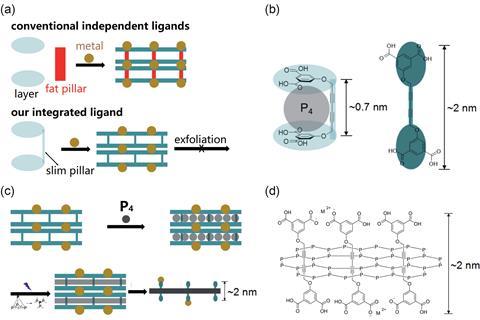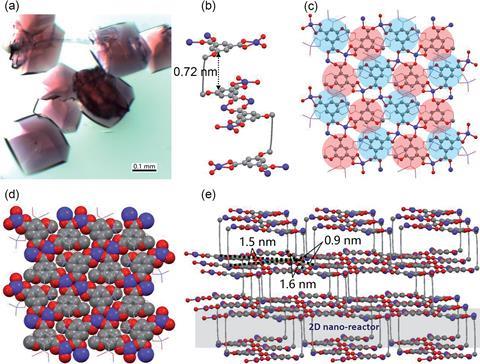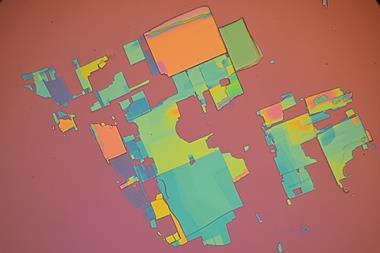Polymerisation process for making phosphorus nanosheets could become model strategy for other 2D materials
Industrialised synthesis of 2D materials is a step closer to reality, new research shows. In a recent study, scientists in China have used a metal-organic framework (MOF) based system to easily produce poly-phosphorus nanosheets.

2D materials are at the forefront of materials chemistry, inciting research ever since graphene was first isolated. An important aspect of this research has been to develop easy and economical production methods.
In this work by Ming Li and colleagues, 2D poly-phosphorus nanosheets were synthesised from white phosphorus (P4) using a new pillar-layer MOF-based nanoreactor. Once synthesised, water and sonication deconstruct the nanoreactor to reveal the 2D poly-phosphorus sheets. Using this reaction as an example, they have shown that their 2D nanoreactor could become a model strategy to produce other 2D materials.
‘Since the gate to the 2D world opened, thousands of scientists have been involved in this field, but unfortunately real industrialisation is still extremely rare. Developing air and moisture stable 2D materials with economic productivity and a simple approach is necessary,’ comments Li.
‘MOFs could be very useful templates to assemble nanoscale materials within their pores. They exhibit a large variety of pore space architectures and can be rather easily assembled and dissolved as required,’ describes Sankar Nair, a nanomaterials expert at the Georgia Institute of Technology, US.
Li describes the work as an industrial process: ‘Our method is similar to casting iron sheets in a mould. The 2D nanoreactor is a mould with 2D cavities; white phosphorus intrudes into these cavities and then polymerises. After dissembling the 2D nanoreactor, free 2D phosphorus sheets are obtained.’

However, Marco Ranocchiari, a researcher at the Paul Scherrer Institute, Switzerland, studying catalysis and MOF chemistry, believes the real advantages of this method are its flexibility and design prospects. ‘The clever design of the organic linker and construction of the nanoreactor is really on a fundamental level but if one finds a more flexible approach to tuning the dimensions of the template, then one can look at specific applications.’
‘By tuning the size or composition of the organic linker of the reactor, one can start tuning the thickness of the nanosheet. Designing the nanoreactor in certain ways will give a certain amount of flexibility – this is really the most important aspect,’ concludes Ranocchiari.












No comments yet